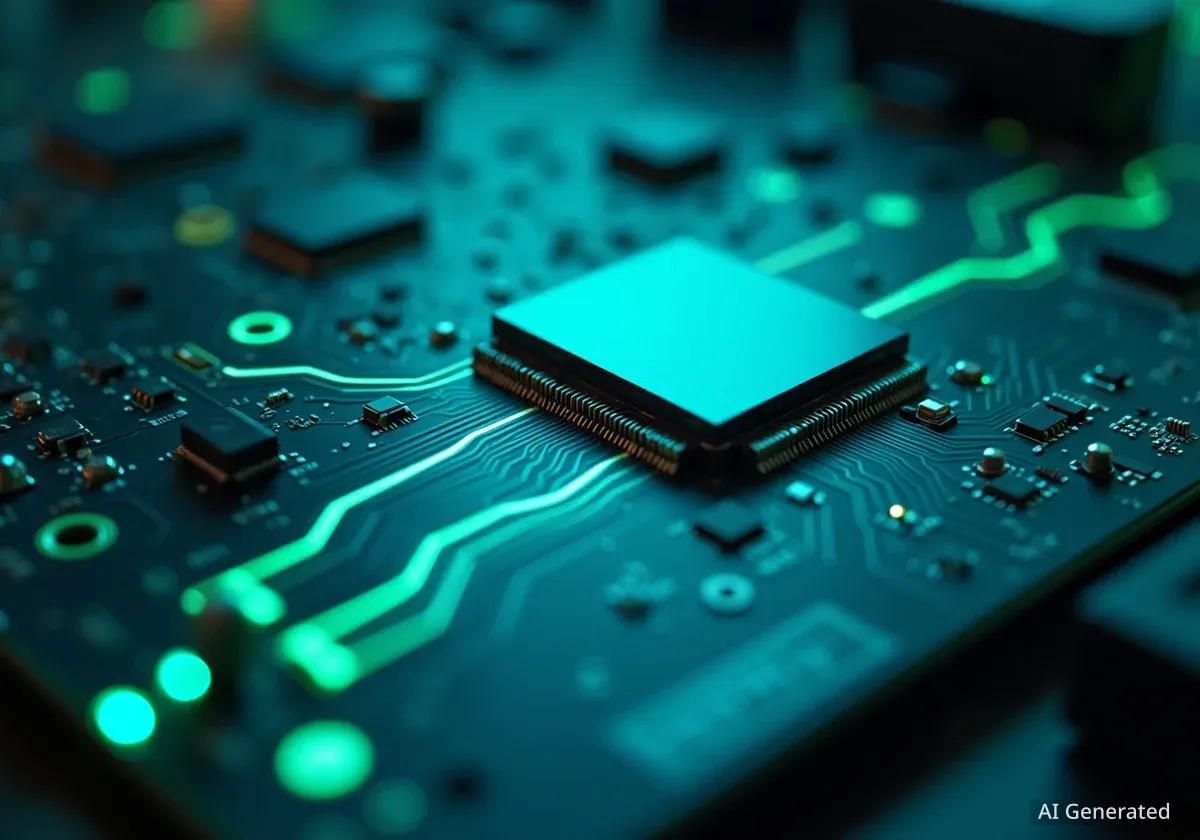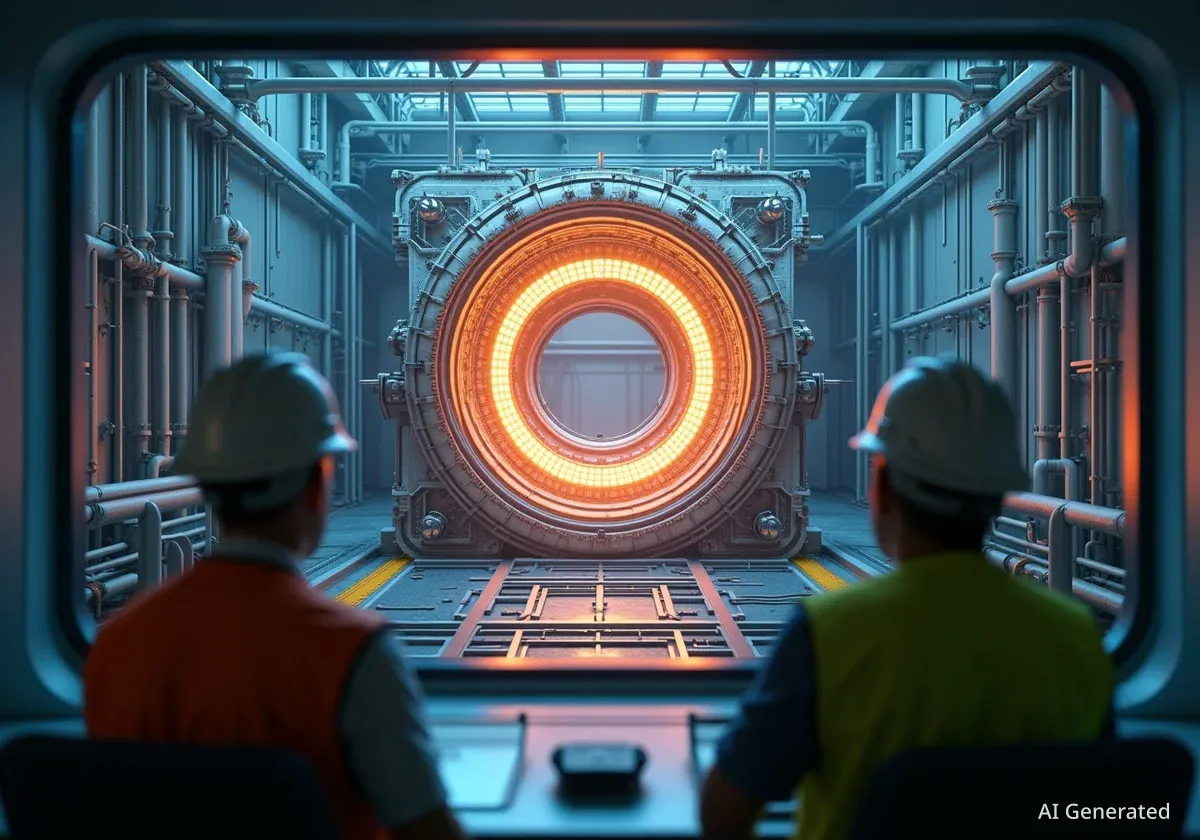Researchers at the Indian Institute of Science (IISc) have used machine learning to show that non-crystalline, or amorphous, materials could dramatically improve the performance of magnesium batteries. This development may address a key bottleneck preventing the commercialization of this high-energy storage technology.
The study, published in the journal Small, found that magnesium ions move up to 100,000 times faster in an amorphous material compared to its crystalline counterpart. This breakthrough could pave the way for batteries that store significantly more energy than the widely used lithium-ion technology.
Key Takeaways
- Magnesium batteries have the potential to store nearly twice the energy of lithium-ion batteries by volume because each magnesium atom exchanges two electrons.
- Development has been slowed by the extremely slow movement of magnesium ions within traditional, orderly crystalline cathode materials.
- Using a machine learning model, researchers demonstrated that a disordered, amorphous structure significantly accelerates ion movement, a critical factor for battery charging and discharging rates.
- The findings suggest a new direction for battery material research, though the long-term stability of these amorphous materials requires experimental testing.
The Search for Better Energy Storage
Most modern electronics, from smartphones to electric vehicles, rely on lithium-ion batteries. However, this technology is approaching its physical limits in terms of energy density—the amount of energy that can be stored in a given size or weight.
To meet growing energy demands, scientists are exploring alternatives. "In order to store even more energy with the same mass or volume, you will have to explore alternative energy storage technologies," said Sai Gautam Gopalakrishnan, Assistant Professor at the Department of Materials Engineering at IISc.
Magnesium-ion batteries are a leading candidate because of their potential for higher energy density. A battery's operation involves ions moving between a positive electrode (cathode) and a negative electrode (anode). Magnesium offers a distinct advantage over lithium in this process.
"In magnesium batteries, each magnesium atom can actually exchange two electrons, whereas each lithium atom can only exchange one electron with the external circuit. So, you can get close to twice the amount of energy per atom moved," Gopalakrishnan explained.
Overcoming a Fundamental Obstacle
Despite this advantage, progress in magnesium battery technology has been slow. The primary challenge lies in finding a suitable material for the cathode that allows magnesium ions to move in and out quickly and efficiently.
Crystalline vs. Amorphous Structures
In materials science, a crystalline solid has atoms arranged in a highly ordered, repeating pattern, like bricks in a wall. An amorphous solid has a disordered, random arrangement of atoms, like a pile of sand. This structural difference significantly impacts how ions can travel through the material.
Researchers have traditionally focused on crystalline materials, which have a rigid, ordered atomic structure. However, this very orderliness hinders the movement of magnesium ions, which are larger and have a stronger charge than lithium ions. "The main bottleneck in commercializing magnesium batteries is the lack of good materials that can act as cathodes," Gopalakrishnan noted.
The IISc team proposed a novel solution: what if a less organized structure was actually better? "If we break the crystallinity and create something that is amorphous, haphazard, and chaotic, that may actually help magnesium to move fairly well within the structure," Gopalakrishnan said.
Machine Learning Accelerates Discovery
Testing this hypothesis presented a significant computational challenge. Simulating the atomic behavior of amorphous materials is complex and time-consuming with traditional methods.
Standard electronic-level simulations using Density Functional Theory (DFT) are highly accurate but too slow for large, disordered systems. Faster methods like Molecular Dynamics (MD) simulations are less accurate. "Modeling amorphous systems accurately is very difficult," stated Vijay Choyal, the study's first author and a former postdoctoral scholar at IISc.
To overcome this, the research team developed a hybrid approach using machine learning. They first generated a highly accurate dataset by running small-scale DFT simulations of amorphous vanadium pentoxide, a potential cathode material. They then used this data to train a machine learning model.
This trained model was then able to run large-scale MD simulations with both the speed of MD and the accuracy of DFT. This allowed the team to effectively model how magnesium ions would behave in a larger, more realistic sample of the amorphous material.
A Massive Leap in Performance
The simulation results were striking. The team observed that the rate of magnesium ion movement in the amorphous vanadium pentoxide was about five orders of magnitude—or 100,000 times—faster than in its crystalline form. This represents a significant improvement over existing state-of-the-art materials.
The Path to Commercialization
This computational discovery provides a new and promising direction for the development of practical magnesium batteries. "Our work offers a completely different pathway to identify electrode materials for batteries and takes us a step closer to commercialization of magnesium batteries," said Gopalakrishnan.
The next step is for these findings to be validated in a physical lab. Experimentalists can now build on this research by synthesizing and testing amorphous vanadium pentoxide in actual battery cells.
However, the researchers acknowledge that questions remain. One key concern is the long-term stability of amorphous materials during repeated charging and discharging cycles. "One disadvantage is that we don't know how stable the amorphous materials can be when used in a practical battery," commented Debsundar Dey, a co-author of the study.
Dey concluded, "The key takeaway is that using amorphous materials increases the mobility of ions, but we also need to experimentally validate our observations." If proven stable, this approach could unlock the potential of a new generation of high-capacity energy storage.





